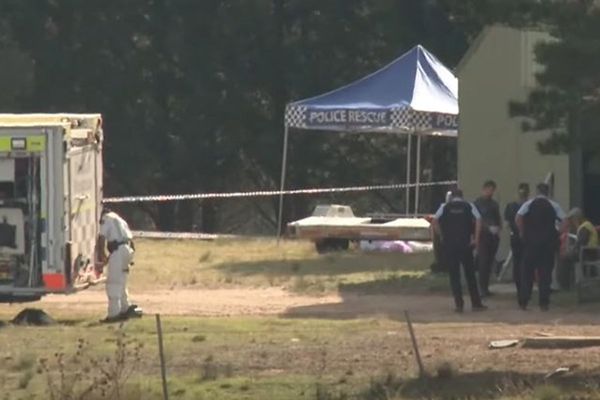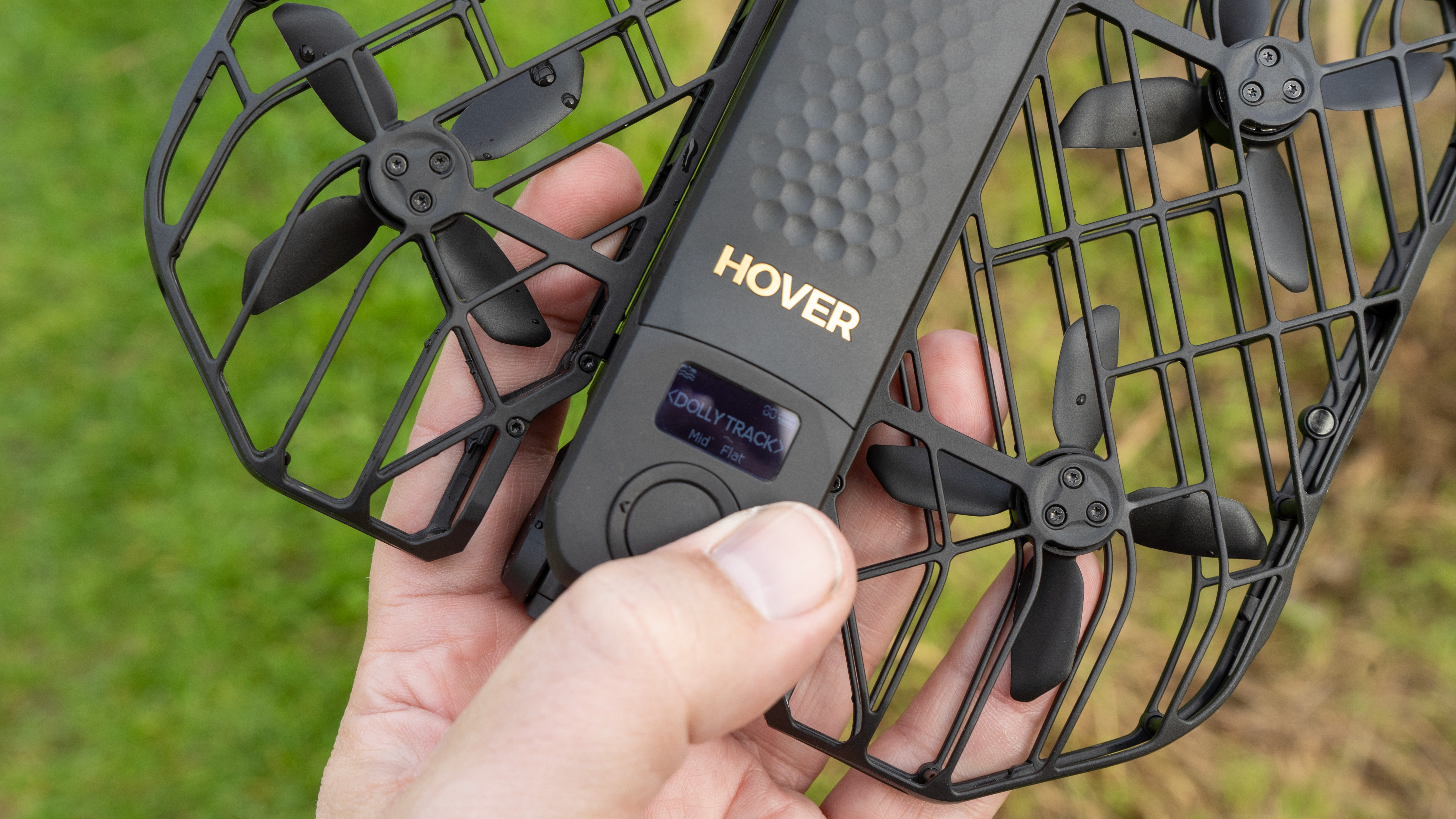
The HoverAir X1 established the brand as a serious alternative to the market leader DJI. It was innovative – using the main camera as a tracking device. It was the first drone smart enough to reliably act as a selfie drone, hand-launched to capture video without the need to carry a controller.
This follow-up, the X1 Pro Max (the upper tier option of two new models), brings a similar design concept – foldable and pocketable – but an all-new design and a much more powerful camera, even the offer of 8K video. That's striking since DJI don't offer that resolution with any models beneath the Inspire 3, which costs about the same as a car.
Video resolution can be misleading though. A better comparison is just how much further forward this drone moves from the original X1, and every one of those steps (longer battery life, more camera quality) seem designed to tread on the toes of the established best camera drone market.
At the same time, the price has gone up too. So – if the Pro Max X1 wants to play against the established players, have they managed it? And for whom?
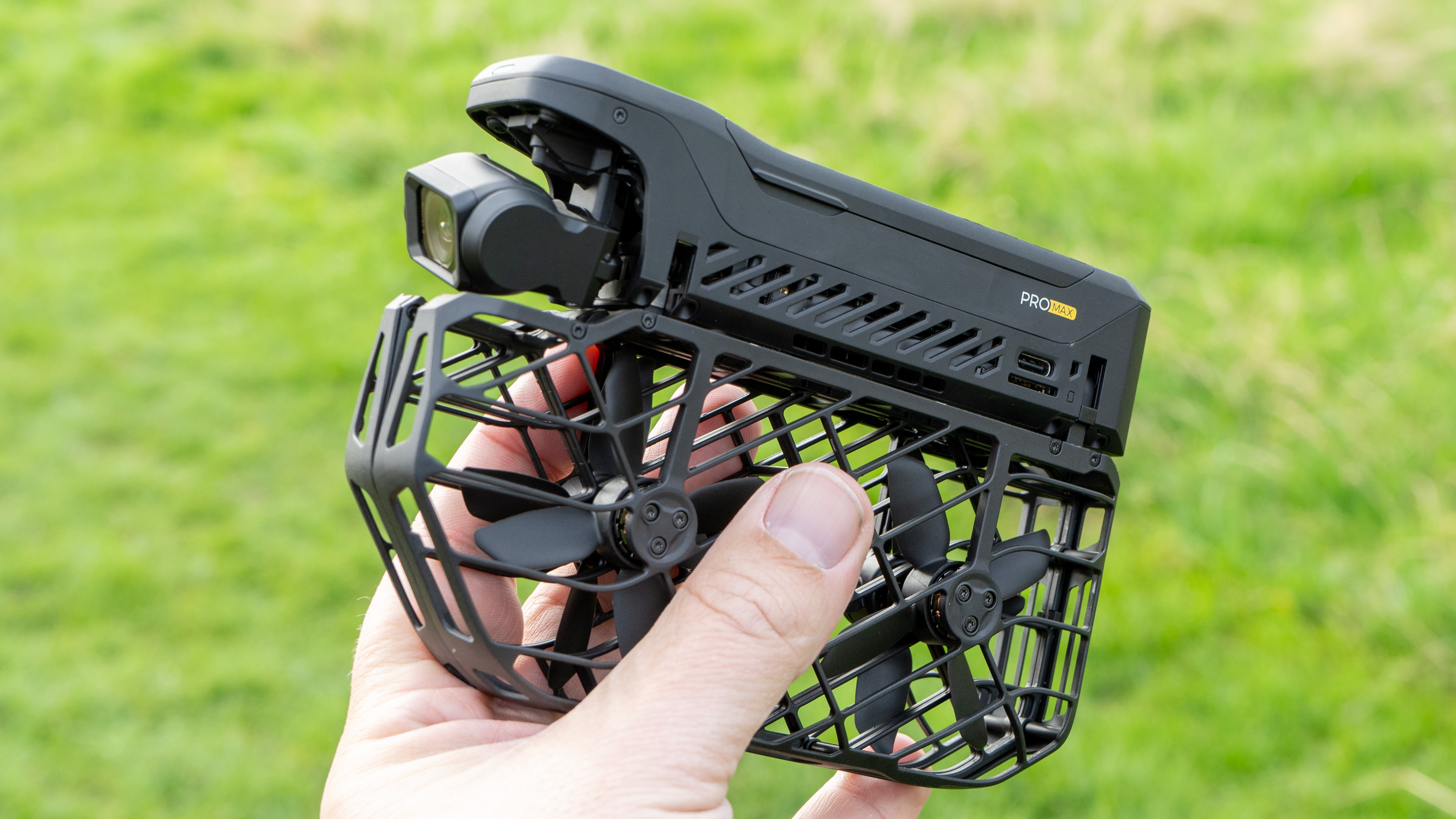
HoverAir X1 Pro Max: Specifications
HoverAir X1 Pro Max: Price
The launch price is $699 / £639 (around AU$1,140) as announced in late 2024 – I tested the drone then, but held off a little because there were some issues with the controller. That price includes one battery, a USB-C cable and a soft storage bag, but there are other bundles (I'd recommend a spare battery if possible).
To that end, the Combo Kit adds a second battery, charging hub & 65W adapter for $879 / £799.
Also featured in this review is the Beacon and Joystick bundle – $228 / £208. It's worth noting that adding this is pushing into the same price bracket as the DJI Air 3S.
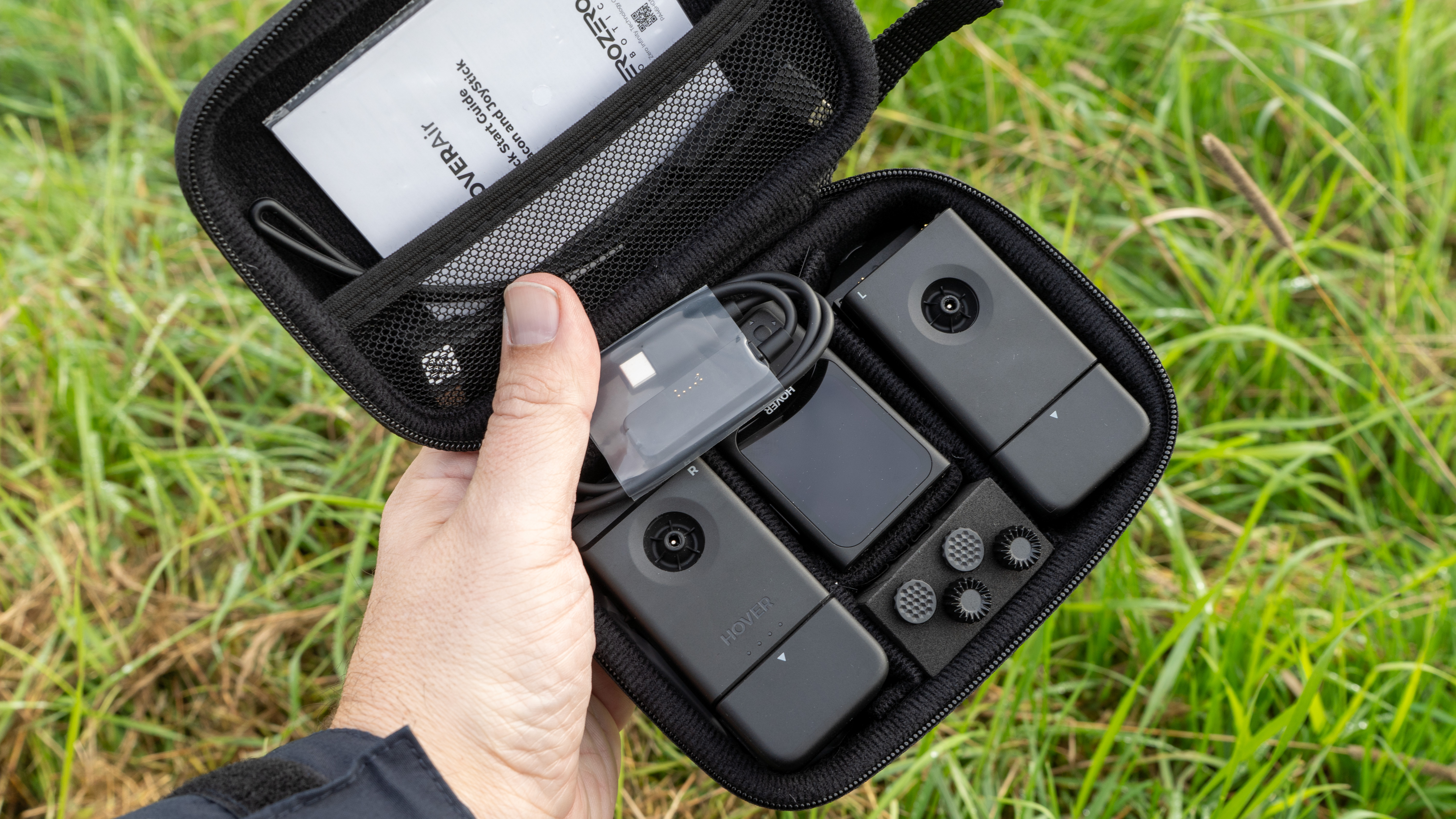
HoverAir X1 Pro Max: Build and handling
The HoverAir's clever, simple folding design has been well received, and this drone is a refinement of that made a bit bigger to accommodate a more powerful camera and (slightly) better interface. The interlocking elements that create the book fold are still a simple joy, and the weighting of the spring is excellent.
The design might have got a little more aerodynamic compared to the X1 with the trimmed front corners, and there is a perceptible improvement to the quality of the cages against the predecessor. The fuselage is a black ABS-like plastic. There is a USB-C socket and MicroSD socket on the side.
You can operate the drone entirely by using the buttons atop it. Despite appearances, there are three: a central button and left and right 'joystick' buttons. The mono OLED screen (as well as a loud and clear speaker) provides feedback on your choices.
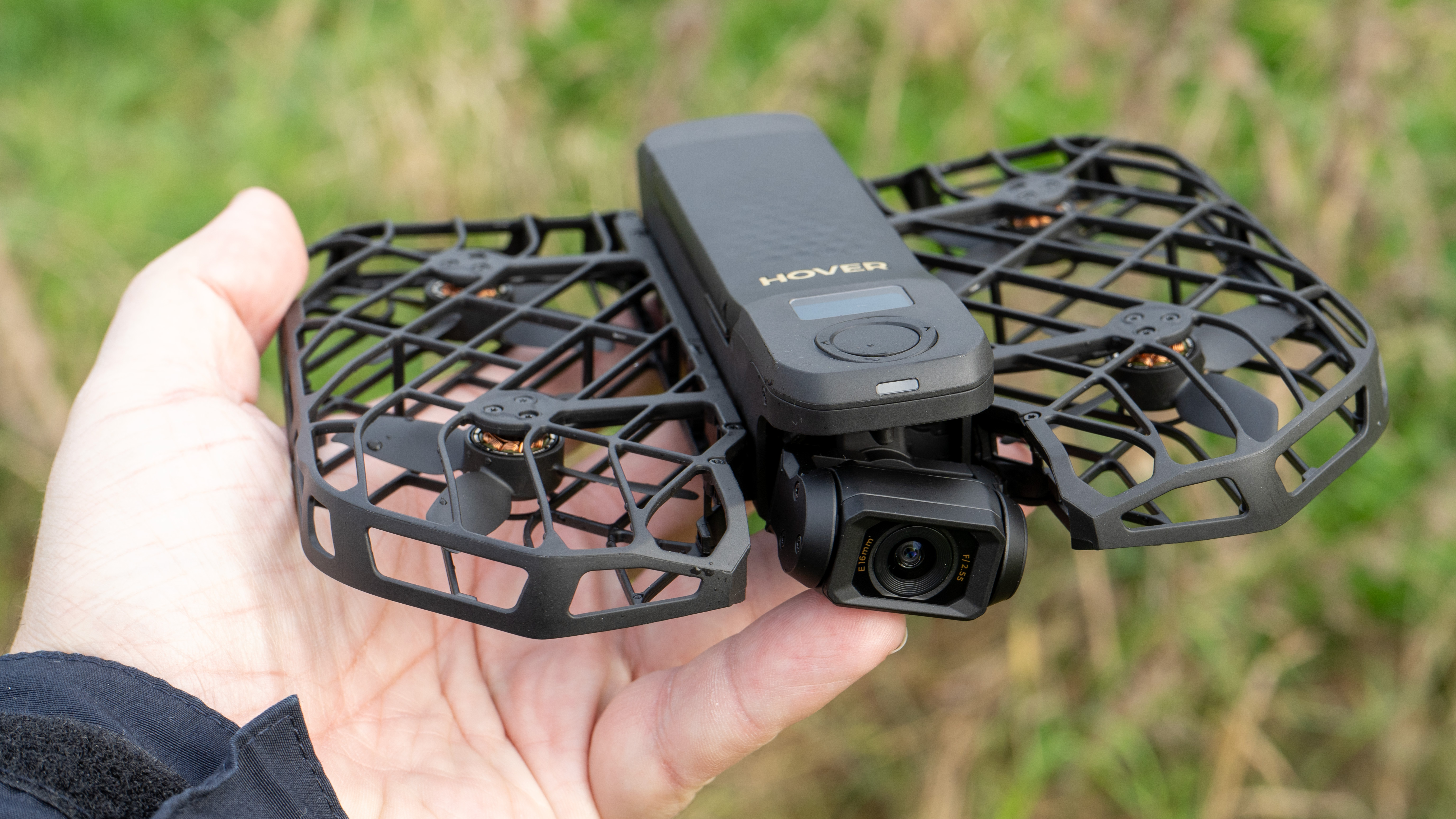
To start a flight, you just need to power up (long press), tap left or right to select the mode, then short press to initiate the flight. 16 minutes doesn't sound like a lot of flight time compared to a traditional camera drone, but since you might be just going for brief periods of AI tracking – before letting the drone land back on your palm and pocketing it again – it isn't as limiting as you'd imagine.
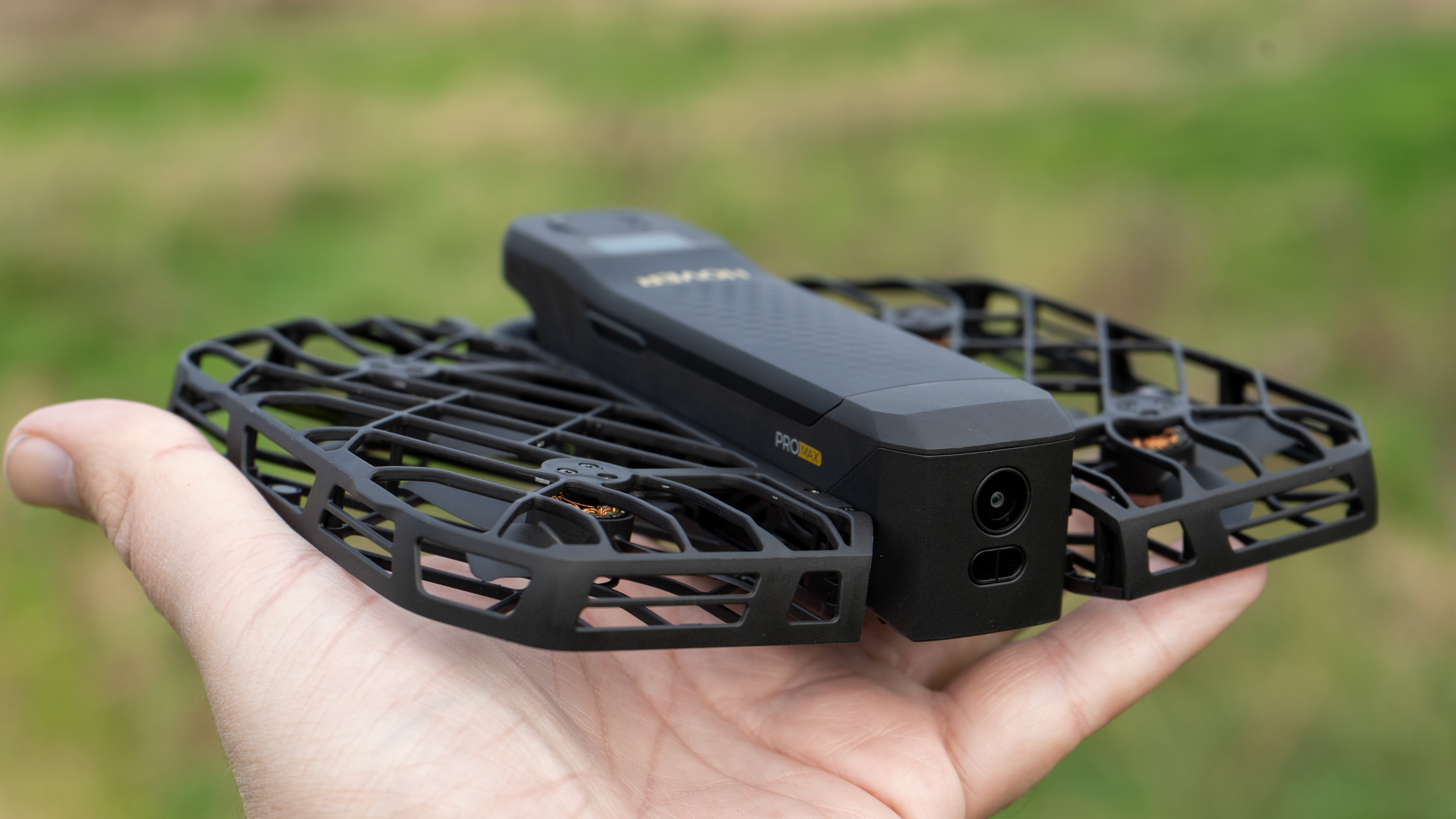
To make any more significant changes to the settings, frustratingly, you need to resort to the app. I say frustratingly as the circular design around the main button makes it look like there should also be up/down options to adjust the main setting on each mode – for example the orbit distance – but there aren't.
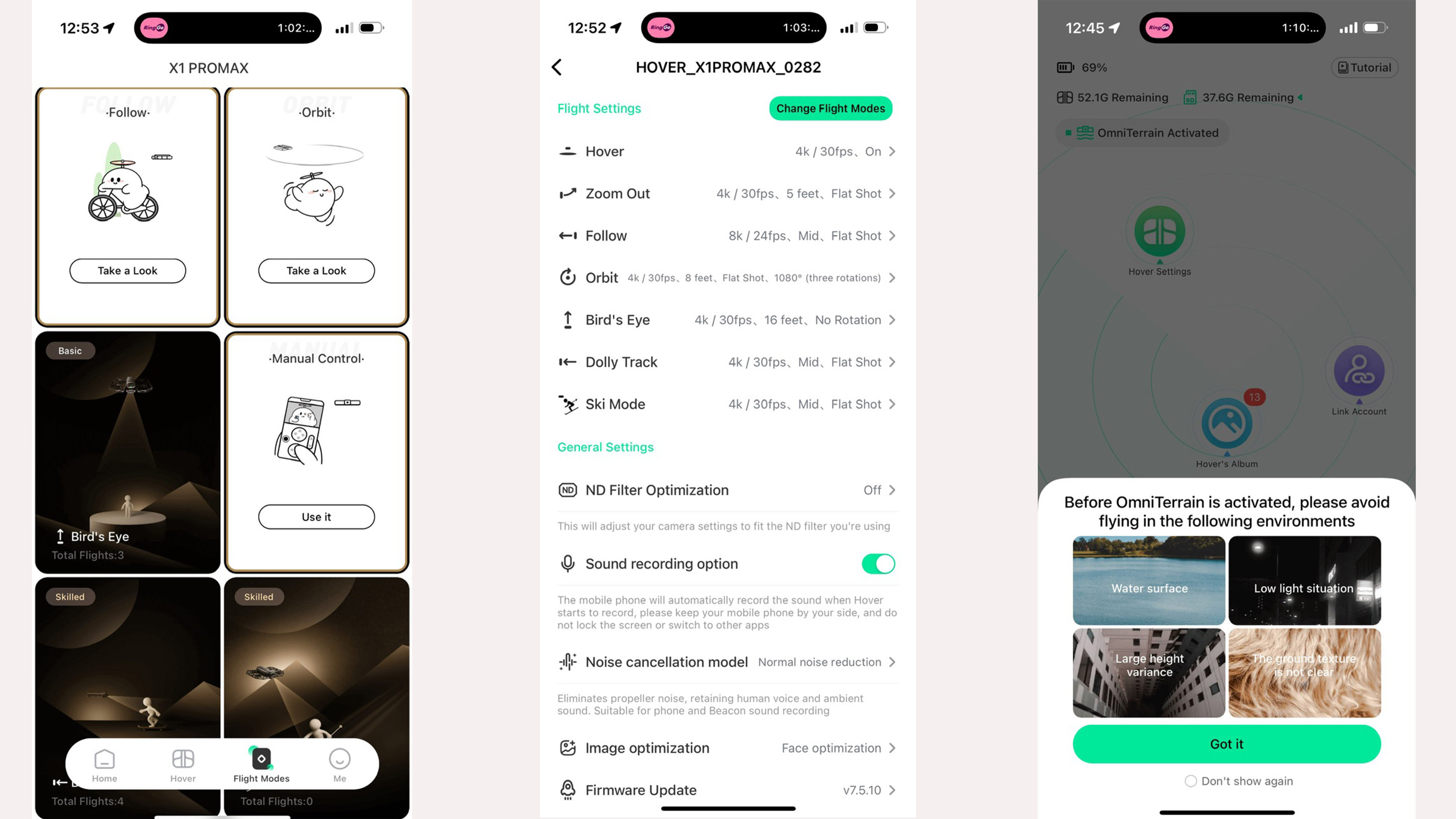
The app isn't difficult to use, as such. Personally I found it slightly hard work because I'm used to software which acts as an on-screen display primarily from many drone tests, whereas this acts more like a modern social app.
That's stylistic though, and it actually makes a lot of sense if you're coming to it clean. The app connects easily to the drone, and includes tutorials for all the key features.
These, though, are simple enough.
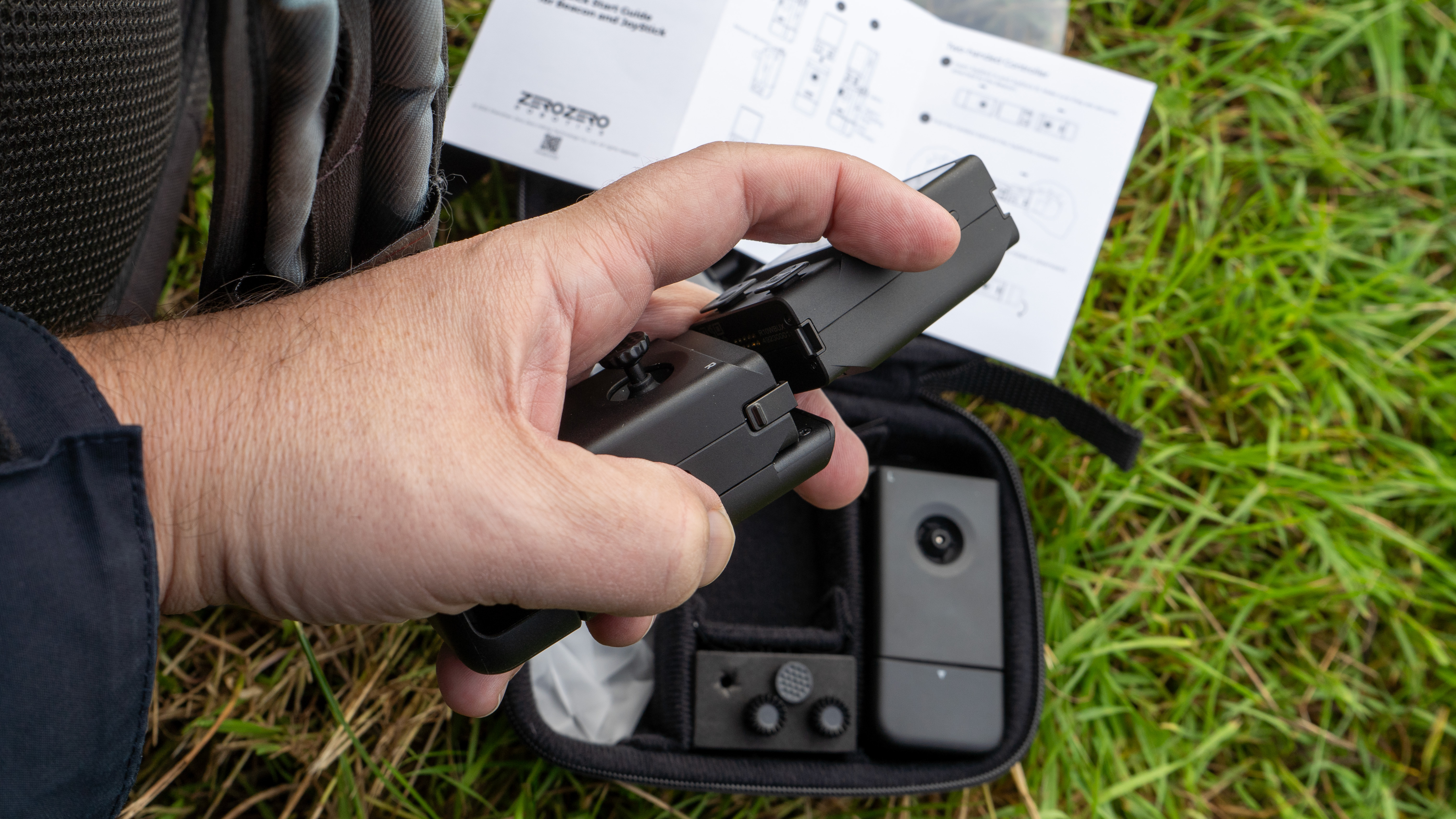
Controller bundle
The new Pro and Pro Max drones have another big trick compared to the original X1, though you do need to pay extra for it. The beacon / controller.
This has a tiny display and and an assortment of different ways to connect it so it it can serve either as a homing point for the drone or as a
When I tested the drone, my early sample had some issues with this system, but it has been ironed out now, and I've got to say I really like the concept. The central device has a tiny display,
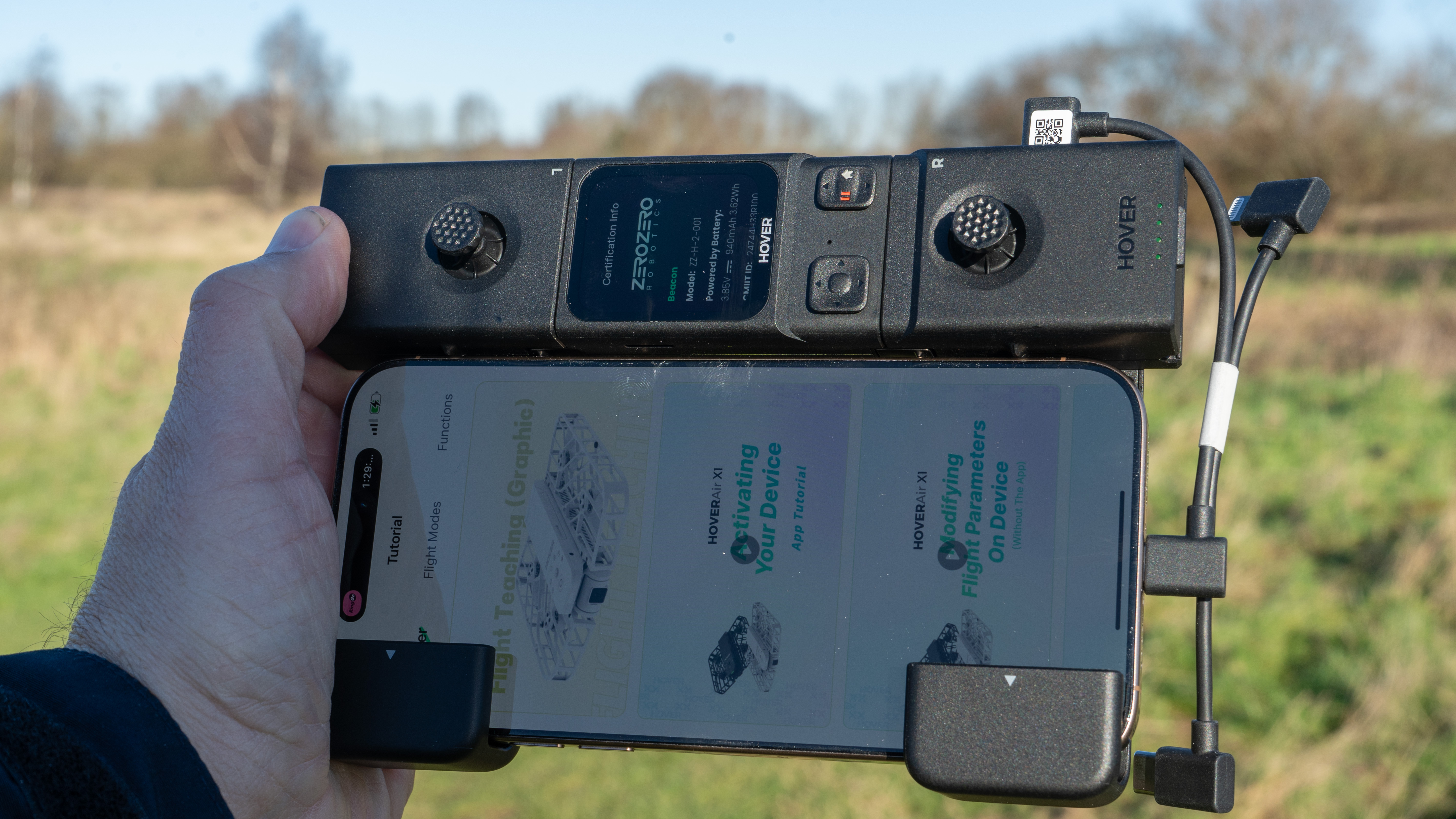
The controller can be used on its own (no phone) or with a phone in place. I had to take the case off my iPhone 16 Pro Max to clip it in, and irritatingly, some of the 'back' icons in the corner of the app were then hidden under the clips.
I also didn't find a way to get to the camera settings which I could when I was just flying the drone. If you opt not to buy the controller, you can also fly manually with an on-screen display and easily pop up a settings menu. With the controller (and its tiny screen) I wasn't able to do this, and I also couldn't work out how to do it with my phone attached to the controller.
Some of these are software issues which will be addressed, but it'll need some thought to consider the placement of buttons on the screen!

HoverAir X1 Pro Max: Performance
In the drone's core area – plam take off and flight, subject tracking etc. – it does perform impressively and once you've followed the tutorial and understand the right time to press the button you quickly become accustomed to it.
The tracking isn't easy to fool, however, it does sometimes lurch a little harder than is ideal; some kind of smoothing would be useful.
Where I did have some issues is when I wanted to adjust settings via the controller. The drone seemed to default to flying very slowly manually, and it wasn't immediately obvious how to alter this in settings, which frustrated me. 16 minutes is an impressive battery life for the weight, but it isn't entirely obvious why not push the weight all the way up to the 249g limit to get a bigger battery in there!
Radio range was also a long way short of the promised 1000m (which is already low by modern standards – even budget drones offer 2 to 4 times that). Where I was testing (a disused golf course) the drone was less than 200m from me when the signal failed and I needed to move to re-instate it.
It probably shouldn't be used too far from home given the battery life, but it'd be nice to be able to rely on a better signal to navigate trees and the like more reliably too.
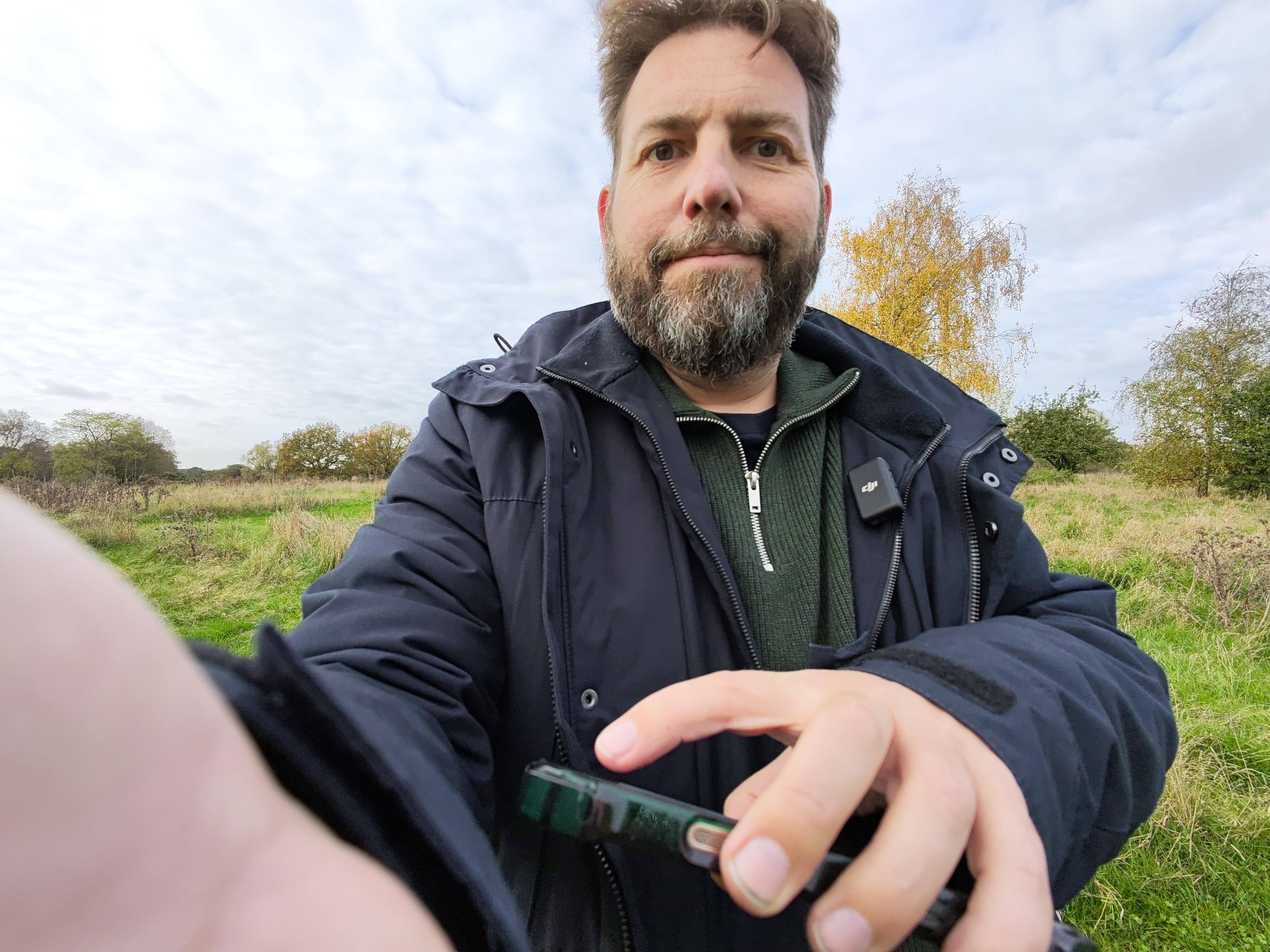
HoverAir X1 Pro Max: Sample Images
Most of my sample images are caught on crisp days which create a very challenging light, but the camera handles them as well as a typical higher-budget ultralight drone, especially impressive given the weight is even lower. Flare was an issue though – but this drone is more likely to be used nearer the surface so perhaps my samples are less fair comparisons!
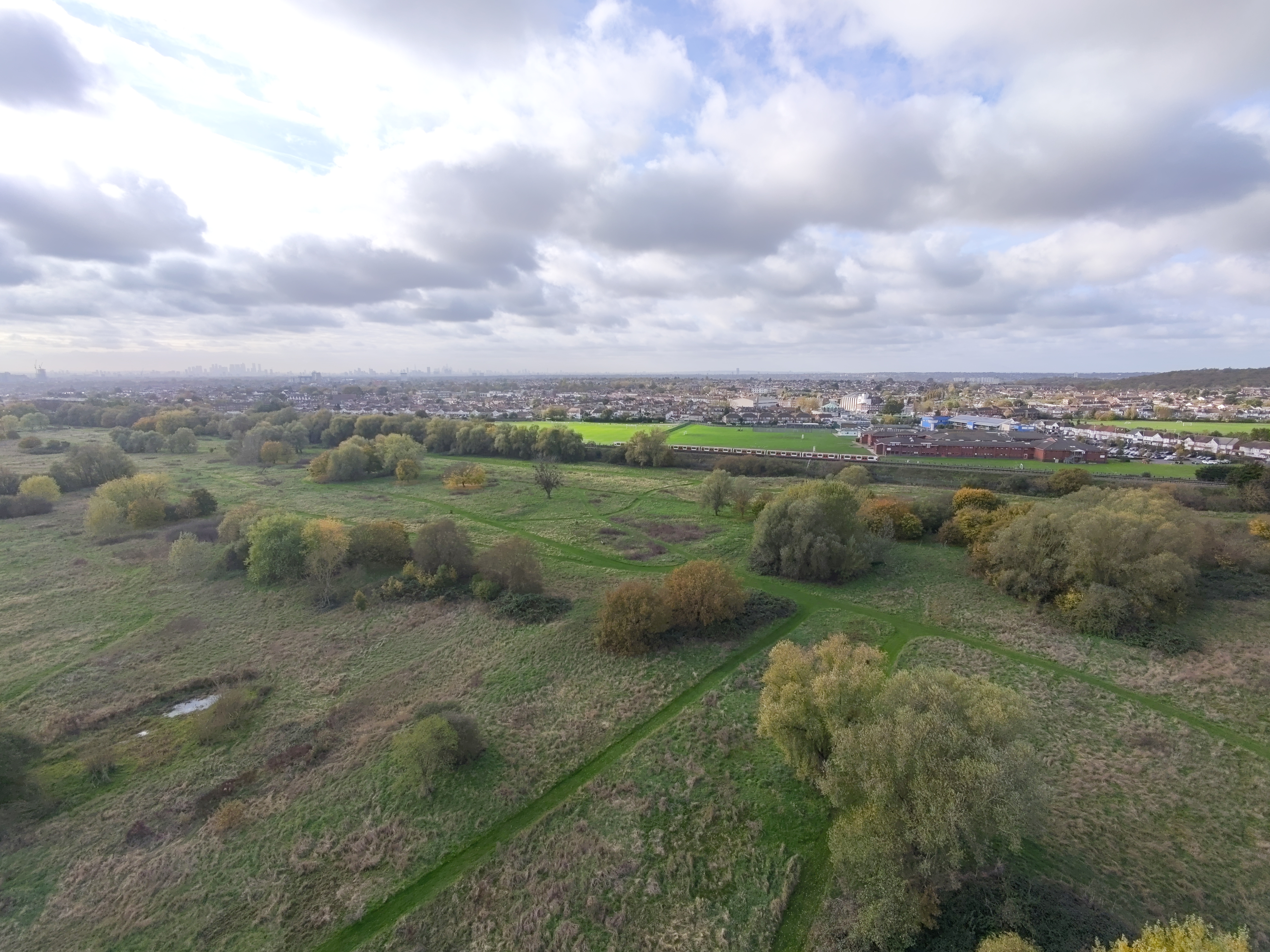

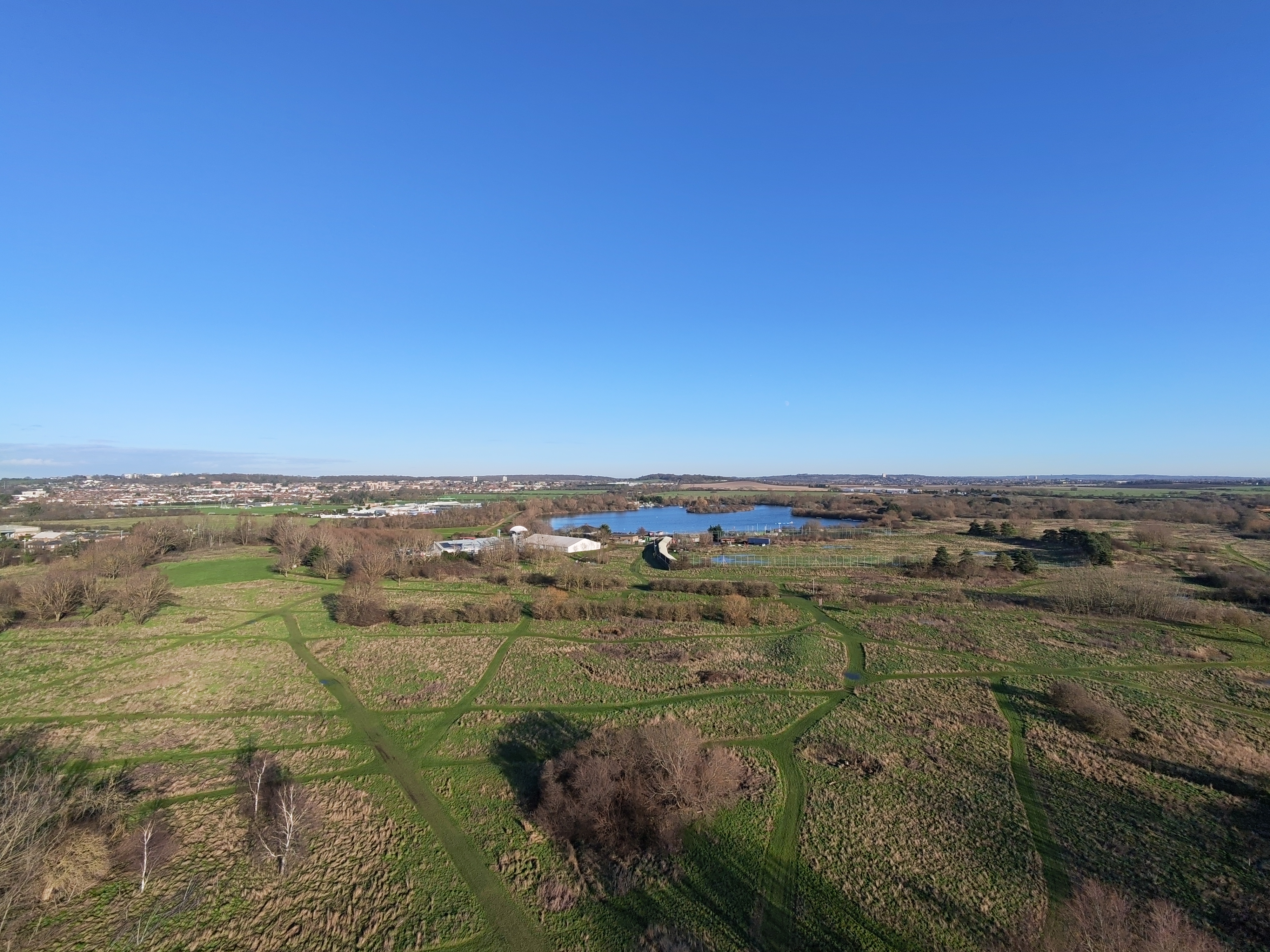
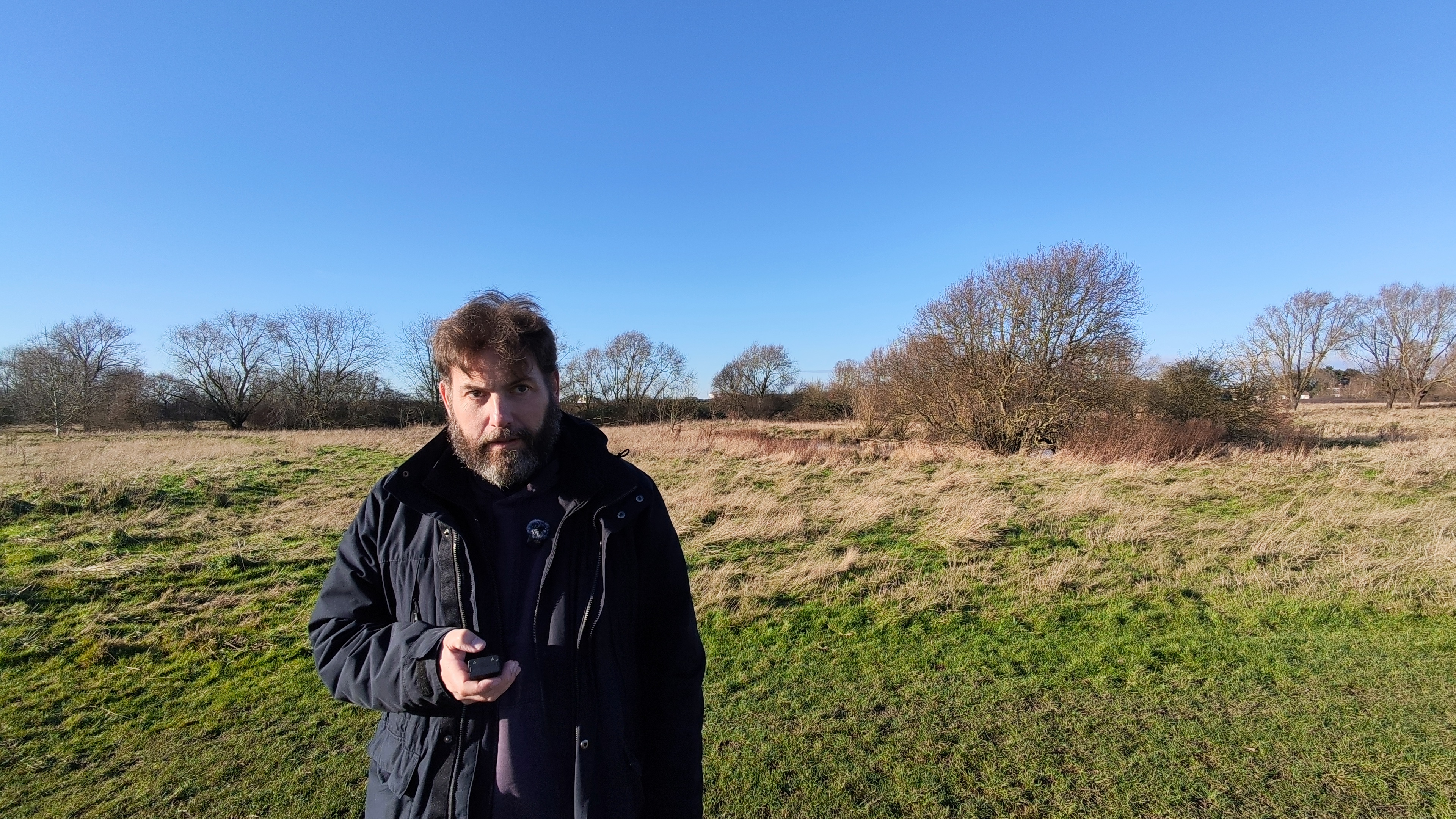
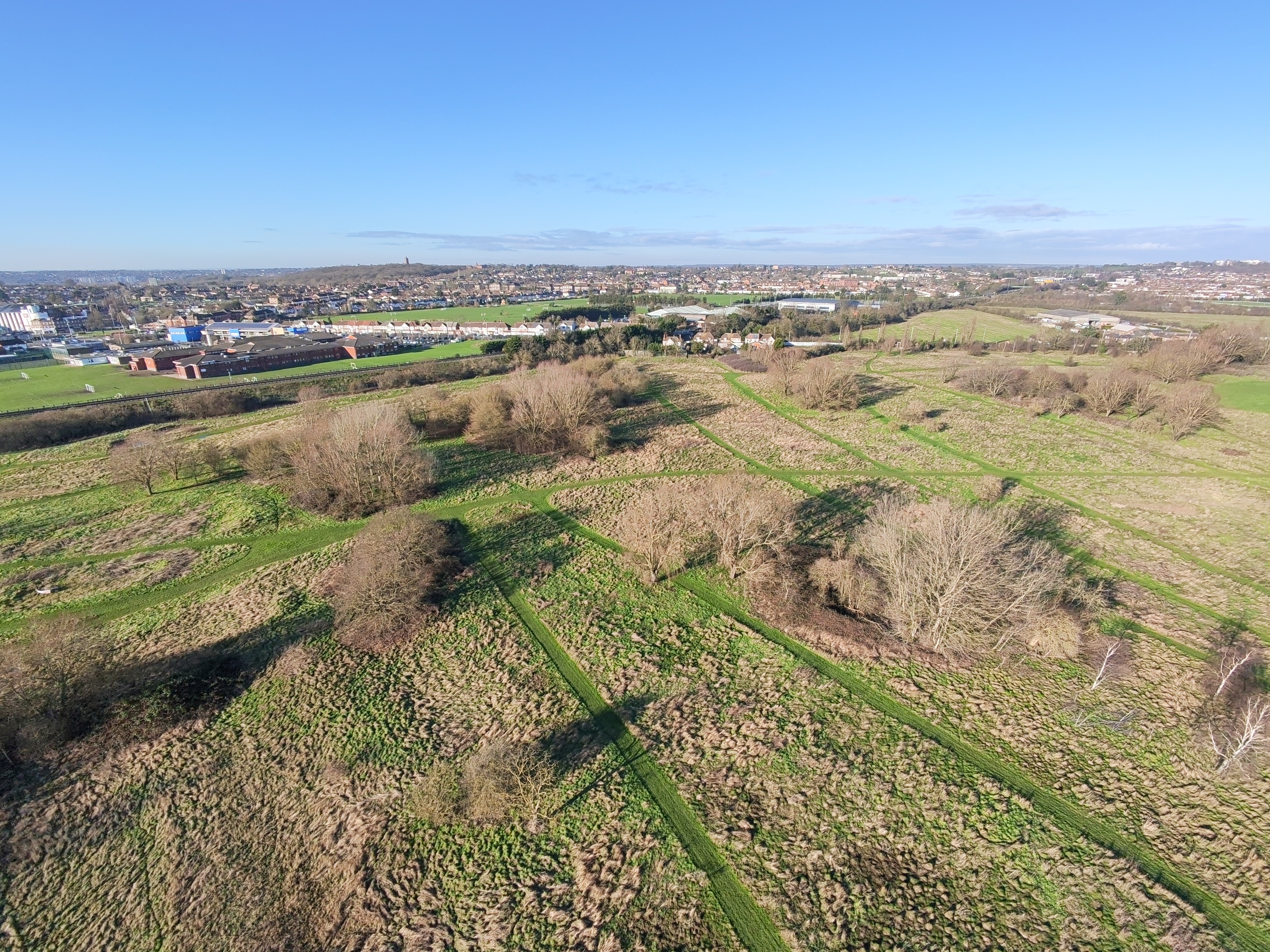


HoverAir X1 Pro Max: Sample Video
The video sample clearly shows the quality of the camera – at the end I've added a 200% zoom on some of the 8K footage. You can also see how comfortable I am with the drone very near me. Yes, it could deal with very harsh light better, but then all small cameras in the sky on clear days face issues here to some extent.
HoverAir X1 Pro Max: Overall Verdict
Overall the HoverAir X1 Pro Max is mightily impressive and definitely gives the established players a run for their money in a very robust package. It makes some design choices that mean it deliberately does not compete on some significant fronts with other drones at similar price points, and that is something, as a customer, you need to decide whether you're aligned with.
There are, too, some other disappointments which are harder to overlook – especially the radio range and quirks I've mentioned about the innovative, but perhaps not perfect, controller/beacon system. Much of this, however, can be resolved with software and it's fair to say that – since HoverAir/ZeroZero robotics launched using crowd-funding they seem good at listening to feedback and developing it.
Ultimately, then, this isn't a perfect replacement for a more dedicated camera drone at the same price, but instead offers a genuine alternative. If you value the tracking features then this device executes them well. If you also want a good camera (and can live with at-best-average manual control range) then this is also an excellent drone, and that flexibility is good to have. The app's downloading and sharing tools are also enjoyable to use and the ease you can dispense with the phone makes this an easy device to have with you. For what is still a very new side to drone tech, this feels surprisingly refined.
HoverAir X1 Pro Max: Alternatives
Social Video
@digitalcameraworld ♬ Akon's Beautiful Day - Akon
How I review drones
As a qualified drone operator with commercial experience – and a lot of leisure time spent flying drones too – I've always found the best way to test a drone is to get out there and use it in the real world, and this experience was no different. I tested the drone in different weather conditions, at different times, and experienced the software and charging (you'll see that from just how much more hair I had in later pics than in the TikTok video!)




